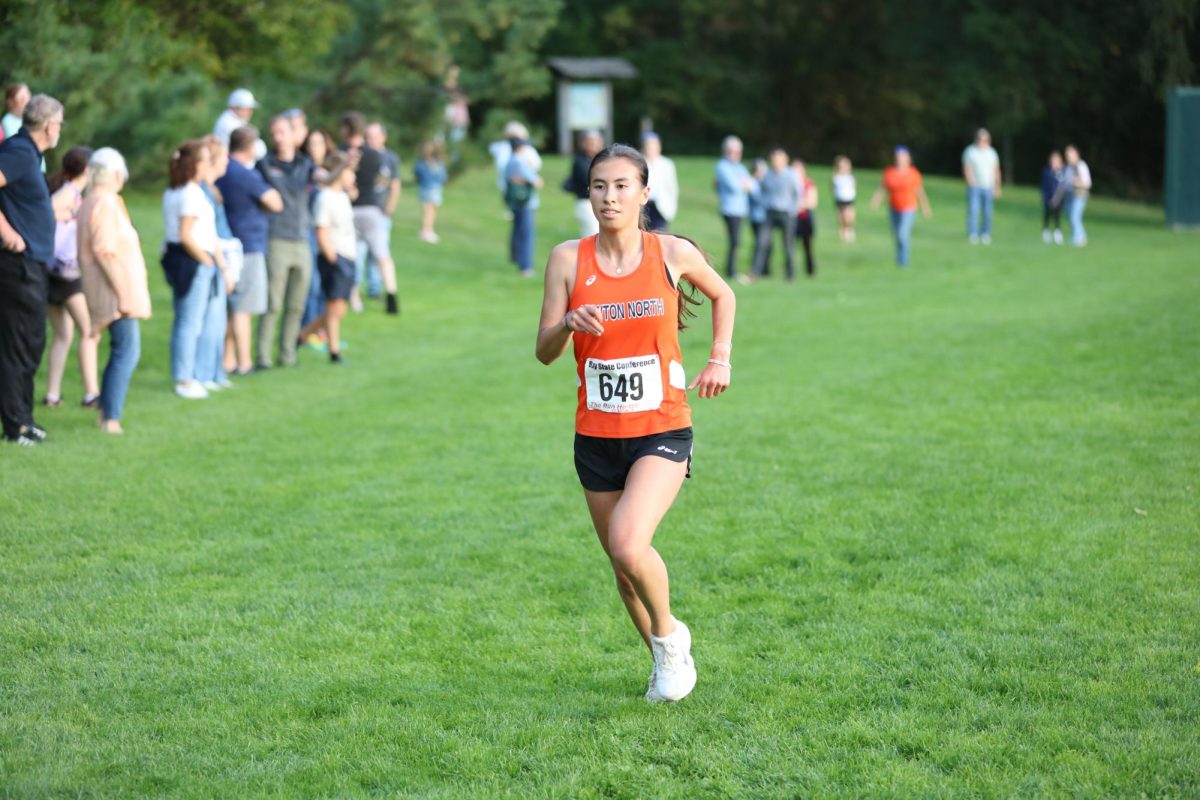
by Elena Schwartz
A new type of classroom is cropping up in schools across the country, and, beginning last year, in this school: the flipped classroom. A flipped classroom is one in which students watch their teachers’ recorded lectures at home and work on experiments, labs, and problem-solving in class.
Flipped classrooms have been put into effect in schools everywhere, and are being met with varying degrees of success.
A New York Times article from October 9 details how the first school in America to completely flip, Clintondale High School in Michigan, accomplished it.
In the fall of 2010, a social studies teacher at Clintondale experimented with flipping his classroom by running two classrooms, one flipped and one traditional, with identical material and assignments. The article reported that after 20 weeks, the students in the flipped classroom were outperforming the students in the traditional classroom: 13 percent of the flipped students had failed the previous semester, but no student received a grade lower than a C+ after flipping.
That spring, the rest of Clintondale’s ninth-grade teachers flipped their classes and saw impressive results: the failure rate in English dropped from 52 percent to 19 percent; in math, it dropped from 44 percent to 13 percent; in science, from 41 percent to 19 percent; and in social studies, from 28 percent to nine percent.
In the fall of 2011, Clintondale flipped completely. In the article, the school principal reported that the school’s failure rate has dropped from 30 percent to under 10 percent since implementing flipped classrooms. The graduation rates at Clintondale have risen dramatically, and are now over 90 percent, according to the article. College attendance has increased from 63 percent in 2010 to 80 percent in 2012.
The flipping trend has taken root at this school too: science teachers David Bennett and Peter Hamel flipped their Advanced Placement Chemistry classes last year. Students receive one fourth of the lectures in class, and the rest of the lectures and lecture notes are available online.
Unlike the teachers at Clintondale, Bennett and Hamel could not be sure whether there has been a marked improvement in grades since the flip.
“We wouldn’t do it if we didn’t think it had a positive impact on student achievement,” said Hamel, “but there are so many moving parts.”
Enrollment in the AP Chemistry course has increased in the last year, curriculum has changed, and every class contains different students. All of these variables make it difficult to identify whether understanding and grades have improved since flipping the classroom.
Bennett claimed, however, to have noticed “a marked increase in AP scores.”
Bennett and Hamel had other incentives to flip. One, according to Hamel, was the difficulty of teaching all the necessary curriculum in a limited time.
“A typical college chemistry class has six hours of contact time a week: three hours of lectures, an hour and a half of discussion, and an hour and a half of labs,” he said. “We get four hours a week, and we’re supposed to teach the same material to younger students with more on their plates in two-thirds of the time. That doesn’t compute.”
Bennett said that “flipping the paradigm—giving lectures at home and problem sets in class—creates a more interactive environment.”
“There are more resources in class,” he said. “You can get help from other students, and the teacher is present.”
When asked how the flipped system affects students’ workload, Bennett conceded that the workload varies per student.
“If you watch every lecture,” which are typically 45 minutes long, “over and over, you’re probably doing more work,” he said. “If you’re skimming lectures, you’re doing less. All I’ll say is, I get many more completed problem sets now than I did my first year.”
Hamel added that the problem sets they receive also “seem to contain more authentic work. I used to assign readings; students would either not do them, or struggle through and not take that much away from them. A lecture of the equivalent amount of time is much more useful.”
Bennett and Hamel admitted that their system is not perfect. But “we’re improving every year as we go,” said Bennett. “And this system allows us to treat each other’s students as our own,” which creates “a sense of camaraderie among the kids.”
Junior Irene Golden similarly said she appreciated that “all the AP chemistry kids are communicating, not just [the students within] individual classes.”
In general, Golden said she prefered this set up to the traditional classroom.
“You can regulate how and when you want to learn,” said Golden. “If you don’t understand something, you can go back and rewatch the lectures.”
Golden did note problems in the flipped system, however, calling lectures “time consuming” and saying that it is “a drag to be ‘at school’ at home.”
Junior Katie Nugent said she enjoys the flipped classroom and hopes listening to the lectures online will free up more time to do labs in class.
“I think that it is great how we can do the online lectures at our own pace and we can always refer back to them,” she said. “The only disadvantage is that we can’t ask clarifying questions while watching the lectures.”
Not all students are so enthusiastic about Hamel and Bennett’s classroom format, however. Junior Kirby Broderick called the flipped classroom “a nice concept, but executed poorly.”
“I wish they could pick one thing and stick to it,” he said. “Almost nobody needs four hours to do every problem set, and we have awkward setups, such as one class when we spent an hour and a half doing next to nothing, then got home to find an extra hour of lectures.”
Broderick complained that the flip has not been complete because watching lectures is not students’ only homework. Instead, students listen to some lectures in class and occasionally have a block for work, “but do everything else on our own time” at home.
“It’s just a lot of time dedicated to one class,” he concluded.
Hamel and Bennett are the first to admit there are improvements to be made to their system. Nevertheless, the case of Clintondale can attest to the potential success of the flipped classroom in this school in years to come.








































